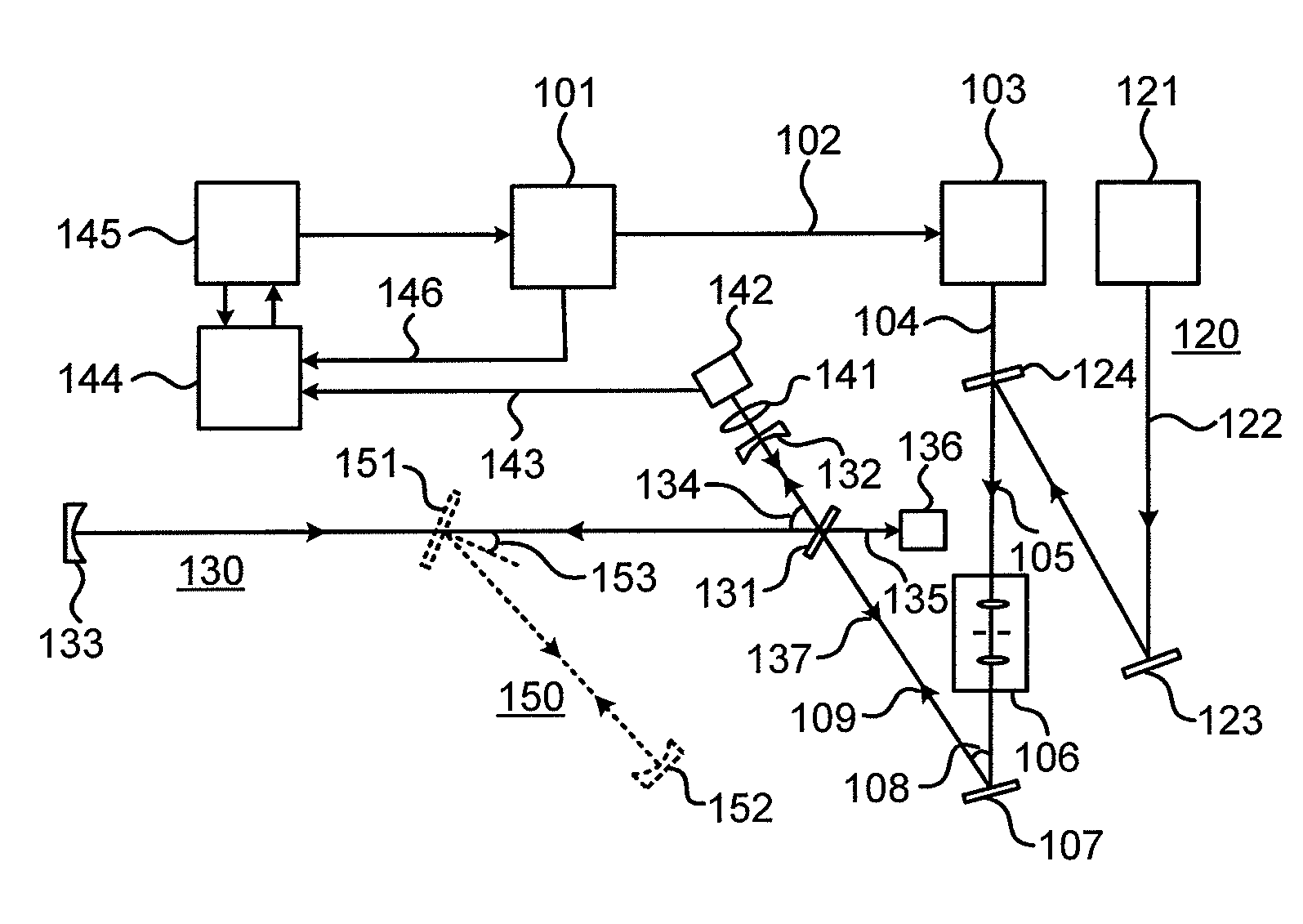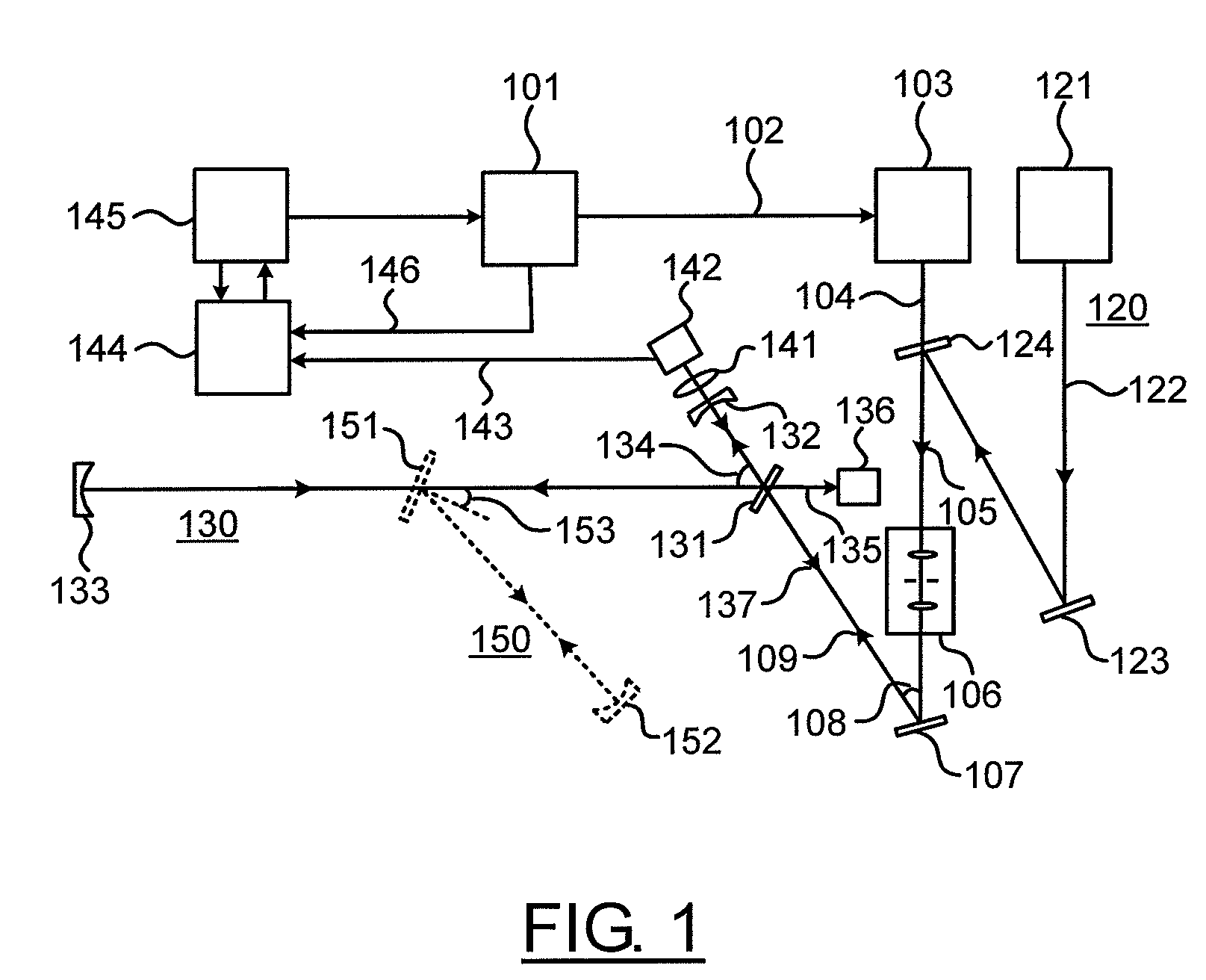Cavity ring-down apparatus and method for measuring reflectivity of highly reflective mirrors
a highly reflective mirror and cavity ring technology, applied in the field of optical component parameters measurement, can solve the problems of difficult to determine the high reflectivity (r>99.9%) of hr coatings using conventional instruments and methods such as spectrophotometers, limited measurement sensitivity and accuracy, and high peak power of pulsed lasers, etc., to achieve accurate measurement of the reflectivity of highly reflective mirrors.
- Summary
- Abstract
- Description
- Claims
- Application Information
AI Technical Summary
Benefits of technology
Problems solved by technology
Method used
Image
Examples
Embodiment Construction
[0022]FIG. 1 illustrates an exemplary embodiment of the present invention. As shown in FIG. 1, a square-wave electric signal 102 is generated from a function generation card 101 and used to modulate the drive voltage of a broad-band (with spectral width above 0.001 nm but less than 10 nm), continuous-wave semiconductor laser 103. A laser beam 104, whose intensity is thus square-wave modulated, is emitted from the semiconductor laser 103. In case the laser beam 104 is visually invisible, a visible beam module 120 is employed for convenience of alignment of the optical arrangement. In this module, a visible light beam 122, generated from a visible light source 121, is adjusted by a reflective mirror 123 and a dichromatic beam splitter 124 to be coaxial with the laser beam 104, making it convenient to precisely adjust the optical components in the optical path of laser beam 104. The combined beam 105 is transmitted through a spatial filter 106, comprising two lenses and a small pinhole...
PUM
| Property | Measurement | Unit |
|---|---|---|
| reflectivity | aaaaa | aaaaa |
| angle | aaaaa | aaaaa |
| angle of incidence | aaaaa | aaaaa |
Abstract
Description
Claims
Application Information
 Login to View More
Login to View More - R&D
- Intellectual Property
- Life Sciences
- Materials
- Tech Scout
- Unparalleled Data Quality
- Higher Quality Content
- 60% Fewer Hallucinations
Browse by: Latest US Patents, China's latest patents, Technical Efficacy Thesaurus, Application Domain, Technology Topic, Popular Technical Reports.
© 2025 PatSnap. All rights reserved.Legal|Privacy policy|Modern Slavery Act Transparency Statement|Sitemap|About US| Contact US: help@patsnap.com



